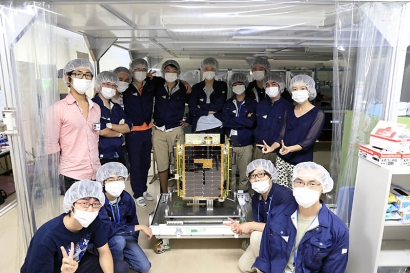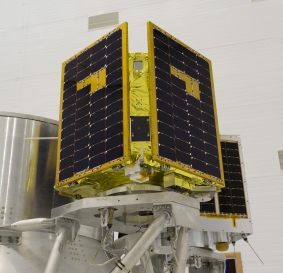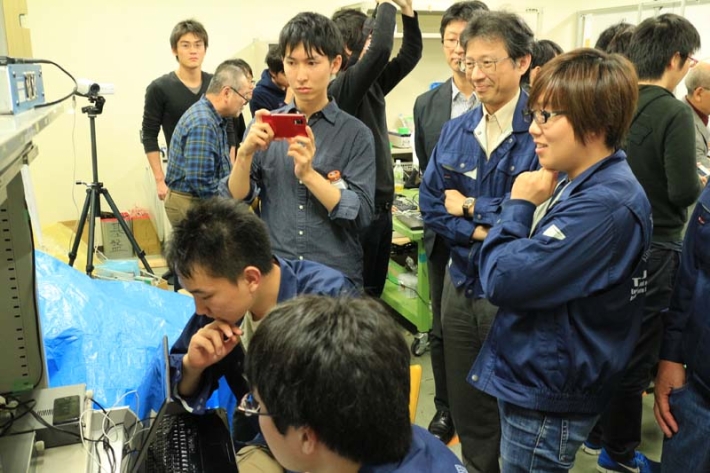Outline
A research group consisting of students from Tokyo Institute of Technology, Adjunct Professor Saburo Matunagaa, Assistant Professor Yoichi Yatsub, and Professor Shin'ichi Kimurac, has developed a 50kg class microsatellite "TSUBAME" for demonstration of advanced astronomical and Earth observation technology in space. TSUBAME was launched into a 500km sun-synchronous orbit as a piggyback satellite onboard a Russian DNEPR rocket on November 6, 16:35 JST. It was injected into orbit above the Indian Ocean and approximately four hours later, TSUBAME returned to the airspace above Tokyo. The TSUBAME development team successfully received telemetry data from TSUBAME at the Tokyo Institute of Technology (Tokyo Tech) ground operation station which confirmed that the satellite was operating normally. It was also confirmed that all the solar array panels were deployed, and that it is operating under spin stabilized attitude control pointing towards the sun. The development team will continue to carefully check the functioning of the satellite system and proceed to mission operation which consists of attitude control, optical earth observation and gamma-ray burst astronomical observation.
a.ISAS/JAXA
Department of Mechanical and Aerospace Engineering, Graduate School of Science and Engineering, Tokyo Institute of Technology.
b.Department of Physics, Tokyo Institute of Technology.
c.Faculty of Science and Technology, Tokyo University of Science.
Research Background and Significance
In recent decades, the advancement of technology and launching vehicles has seen an increase in size and mass of spacecrafts. Although large satellites are capable of advanced missions such as high resolution remote sensing, and interplanetary observation, the development time and cost also increases significantly. Microsatellites are a class of satellites with a mass of under 100kg and are expected to be the new space platforms for experiments and demonstration of advanced technologies in space due to their low cost and short development time.
Ever since the success of the world's first CubeSat "CUTE-I", developed by Tokyo Tech, and launched in 2003, Tokyo Tech has been a leader in microsatellite development. CUTE-I was succeeded by three other microsatellites with objectives of verifying low cost and high-performance microsatellite bus technology that uses commercial-off-the-shelf (COTS) products to conduct scientific and engineering experiments.
Research Content
TSUBAME is much larger in size and mass compared to its predecessors in order to perform more advanced and experiments and science missions. TSUBAME aims to conduct three main experiments:
1) Engineering mission - For demonstration of high speed attitude control technology using a set of four control moment gyroscopes (CMGs)1 mounted in pyramid configuration within the satellite. Successful demonstration of this technology can lead to wider applications for microsatellites. The CMGs were developed in collaboration with Tamagawa Seiki Co., Ltd. CMGs are able to generate high torque while being compact and lightweight. It is able to maneuver the satellite at 6 deg/sec which exceeds expectations for a satellite of this size.
2) Astronomical observation mission - X-ray/Gamma-ray burst (GRB)2 observation by hard X-ray polarimetry4 of GRBs which are believed to be the brightest observable phenomena in the universe. It is also believed to be linked to the formation of black holes3 and can give more information regarding the creation of the universe.
3) Earth observation mission - TSUBAME is equipped with a micro high resolution optical camera to observe disasters, shipping navigation routes, weather and vegetation by high speed maneuvering using the CMG system.
Fig. 1 : (Left) Members of the satellite development team with the TSUBAME flight model. (Right) TSUBAME attached to the rocket.
TSUBAME Engineering Mission
- Operation Verification of Ultra-Small High-Performance and High-Speed Attitude Control Device in Space -
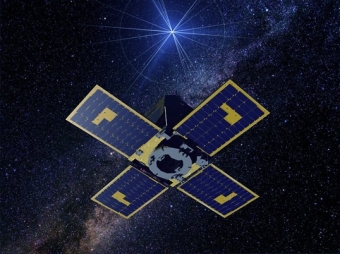 Fig. 2 : A computer generated image of TSUBAME. The high speed attitude control using CMGs have enabled observations of explosive GRBs in space.
Fig. 2 : A computer generated image of TSUBAME. The high speed attitude control using CMGs have enabled observations of explosive GRBs in space.
To perform attitude maneuvers in space, satellites are required to have attitude actuators. Currently, the most common actuators used in space are reaction wheels (RW), thrusters and magnetic torquers (MTQ). The most innovative feature of TSUBAME is the high torque CMGs mounted within the small and lightweight satellite structure which enables quick and agile attitude control for observation of bodies on Earth or in space. A CMG can typically exert approximately 10 times more torque than a reaction wheel of the same mass and thus are equipped in large space structures such as the International Space Station (ISS) for attitude maintenance. The problem with using CMGs in typical satellites is that the high torque generation leads to much more complicated control algorithms. Thus, Matunaga Lab of Tokyo Tech have developed sophisticated attitude control algorithms for the CMG system based on careful computer simulations and have successfully embedded the algorithms into the onboard computer of TSUBAME.
The development of attitude control devices for use in space can be problematic due to the difficulty of reproducing the same effects and dynamics of space on the ground. Thus, the TSUBAME development team has verified the control algorithm using numerical simulations for every possible scenario and have tested the algorithms on the flight model accordingly. By using the flight model, the onboard computer of TSUBAME is connected to an attitude simulator that generates dummy signals emulating the attitude sensors in the space environment and also considers the force generated by the flight model actuators and the mass distribution of the satellite structure (Hardware in the Loop Simulation). In the final verification testing of the CMG system, TSUBAME succeeded to perform a large angle maneuver within 10 seconds, which would usually take hours using MTQs. TSUBAME has several control algorithms for the CMG system embedded in the onboard computer and a variety of attitude control experiments are to be carried out in the space environment after launch. This CMG attitude control technology will then be utilized for the astronomical and Earth observation missions.
TSUBAME Science Mission
- Observation of Black Hole Births using a High - performance Observation Device
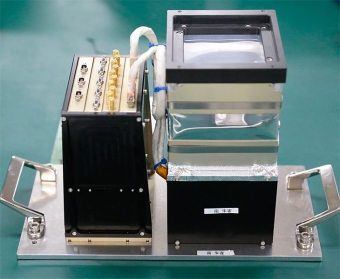 Fig. 3 : The hard X-ray polarimeter onboard TSUBAME.
Fig. 3 : The hard X-ray polarimeter onboard TSUBAME.
When a star with a solar mass orders of magnitude than that of the sun burns out, it is thought to collapse into a black hole accompanied by a supernova explosion. Currently, a lot of black hole candidates have been discovered to date but the mechanism behind the generation of black holes is still shrouded in mystery. In order to explore and observe this phenomenon, TSUBAME is equipped with a high performance gamma-ray detector system. For this science mission, Kawai Laboratory and Hamamatsu Photonics have jointly developed a low-noise, large-area Avalanche Photo Diodes (APDs) and shock/vibration-proof high-sensitive multi-anode photomultiplier tubes (MAPMTs) for use in space. The use of APDs in space has already successfully been demonstrated by "CUTE-1.7+ APD II", which is still in operation. However, the use and operation of MAPMTs within TSUBAME in space will be a world's first.
The main observation target of TSUBAME is the intense gamma-ray flash phenomenon called "Gamma Ray Bursts (GRBs)" which emits the brightest observable light the moment a black hole is born. Currently, this brief phenomenon can be explained using the fireball model. Enormous gravitational energy is released in a supernova explosion which generates a collimated outflow like a jet injected at relativistic speeds which sends an outflow shockwave that interacts with the interstellar medium.
The gamma-rays observed are believed to originate in the shockwaves approaching Earth at light speed (Fig. 4). However, the following fundamental questions are yet to be answered:
- How is the collimated outflow narrowly injected into a particular direction?
- How is the gravitational energy transferred into the relativistic collimated outflow?
- How are the gamma-rays emitted?
Fig. 4 : A schematic image of the gamma ray burst, one of the universe's largest high-energy phenomenon, considered to be the initial stages of a black hole. (Image courtesy NASAGSFC)
One of the reasons for the difficulty of answering these questions is the long distance of this phenomena from Earth. GRBs occur in the far distant universe tens of billions of light years away and thus, these spatial structures cannot be resolved even with the world's largest and most accurate telescope.
Polarization is a property of waves, and for X-rays and the other electromagnetic waves including optical lights, the "polarization" refers to the polarization of the electric field. If the electric field vectors of individual photons align in a uniform direction, the photons are 100% polarized. Recent studies have shown that X-ray polarimetry is considered to be an effective method for deep investigation of the central underlying principle of GRBs. The degree and direction of the polarization has a close connection to the surrounding magnetic field in the emitting region and thus by measuring the polarization of astronomical objects, it is possible to find out information about the magnetic fields within the bodies. The research group intends to use polarimetry to clarify what is happening in the vicinity of the gamma-ray burst's central engine.
Another reason for the difficulty of observing GRBs is the duration and location of the phenomenon. GRBs can last from a few milliseconds to generally less than 100 seconds and occur at random locations in the universe. Thus, it is impossible to send commands to begin observation to the satellite once a GRB has been detected. To overcome this, TSUBAME is equipped with a wide-field burst monitor (WBM) that detects and determines the position of GRBs promptly. The WBM is used in conjunction with the high speed attitude control system of TSUBAME to start observations automatically and measure the polarization of the transient objects.
TSUBAME Earth Observation Mission -
Low-cost Ultra-small Earth Observation Optical Camera: CANAL-1
With recent occurrences of fatal disasters such as earthquakes and tsunamis, there is an increased interest in the quick detection and observation of disasters from space. The vantage point from space can be a valuable asset and by developing formation flying remote sensing satellites at cost much lower than previous missions, a more detailed and situational understanding can be achieved.
The Kimura Laboratory at the Tokyo University of Science has developed a low-cost, highly-reliable optical camera by utilizing cheap and high-performance commercial-off-the-shelf (COTS) and applying the technology of consumer digital cameras and mobile phones to space systems. Similar technology was demonstrated in the world's first solar sail satellite, IKAROS developed by JAXA. IKAROS successfully deployed a small detachable camera and successfully photographed the solar sail deployment of IKAROS. Matunaga Laboratory at Tokyo Tech provided extensive support and cooperation in the system design, development and testing for the small detached camera, including the spin detached mechanism.
Following the experiences from above, an ultra low cost Earth observation camera CANAL-1 with ground resolution of 15m from low Earth orbit has been developed. Due to the critical limitation of the payload size, the optical system was not optimized for the imaging sensor and can potentially achieve much higher resolutions with a longer focal length optical system. Coupled with the high-speed attitude control system, CANAL-1 can flexibly observe any point on Earth. There have been no other examples of such dynamic operations to date and represents a giant leap in satellite-based Earth observation technology.
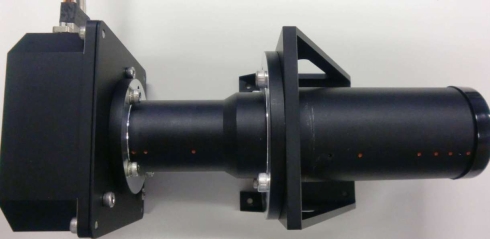
Fig. 5 : An external view of the CANAL-1
Launch/Operation Status
TSUBAME was launched into a 500km recurrent sun-synchronous orbit as a piggyback satellite onboard a Russian DNEPR rocket on November 6th. It was loaded onto the lower part of the third stage of the DNEPR rocket and was launched from a silo (underground launch using converted ICBM) at Yasny Cosmodrome at 16:35 JST. Approximately 15 minutes after launch, TSUBAME was separated from the rocket in airspace above the Indian Ocean.
TSUBAME is equipped with an amateur radio frequency transmitter and has been constantly transmitting satellite data regarding operational status via Morse code. Space systems are usually equipped with highly reliable RF communication devices such as large aperture tracking antenna systems which would provide stable and high speed communication. However, this method is costly and not viable for a microsatellite mission and instead, a COTS amateur radio is installed for smaller satellites. As amateur radio is not as advanced as other communication systems, the amateur radio frequency can often become congested with simultaneous use from other operators and are susceptible to disturbances. As a result, the transmission speed is constrained to a low level and there may be interruptions during satellite communication.
To overcome the weaknesses of using amateur radio, the TSUBAME development team has sought the help and cooperation of amateur radio operators from all around the world. Amateur radio operators are able to receive TSUBAME telemetry data from anywhere in the world and the TSUBAME team has enlisted the help of both local and international amateur radio operators. After separation from DNEPR, the TSUBAME development team received first telemetry data from a German amateur radio operator confirming that TSUBAME was in a stable condition and that all the solar array paddles had been deployed and recharging power as hoped.
At approximately 20:50 JST, TSUBAME made its first pass over Japan and telemetry Morse code data was successfully received at the Tokyo Tech ground operation station. Upon analysis of the acquired telemetry data, the development team was able to reconfirm the stable status and that the solar array paddles had been deployed immediately after separation from the DNEPR rocket. The team was additionally able to confirm the battery voltage and temperature of TSUBAME and concluded that the satellite is functioning well as expected.
Future Developments
In the coming weeks, the equipments on board TSUBAME will be turned on to confirm proper operation. After successful confirmation that all equipment are intact, the various missions will commence. TSUBAME will attempt demonstration of high speed attitude control experiment, Gamma-ray burst astronomical observation, and the Earth observation mission. Additionally, the use of the Institute of Space and Astronomical Science (ISAS), JAXA small satellite control equipment will provide high speed reception.
Fig. 6 : The TSUBAME development team listening to the Morse code from TSUBAME at the Tokyo Tech's ground operating station (11/6 21:00 JST)
This page is based on information current as of November 7, 2014.
The latest operational information can be seen on the TSUBAME operation blog
Explanations of Technical Terms
1.Control Moment Gyroscope (CMG)
A torque generating device which consists of a spinning wheel and a gimbal. Torque is generated by changing the direction of the gimbal whilst the wheel is spinning at a fast rate. It is able exert a relatively high torque for its size and by using a combination of CMGs simultaneously, rapid attitude control of a small satellite is possible.
2.X-ray/Gamma-ray
Types of electromagnetic waves which release extreme amounts of energy. While visible light can be seen with the naked eye, X-rays emit more than 1000 times the energy than that of visible light and Gamma-rays are capable of emitting even more energy than X-rays.
3.Black Hole
A celestial body which consists of extremely high density and mass. The gravity of black holes are so strong that even light cannot escape the gravitational pull. A famous example is Cygnus-X1.
4.Polarized Light
Waves where the electric and magnetic fields oscillate in a particular direction. In X-ray polarimetry, restrictions can be made to the electric field in the vicinity of a radiation source by measuring the direction and deviation of polarization of the electric field vectors.
. Any information published on this site will be valid in relation to Science Tokyo.


